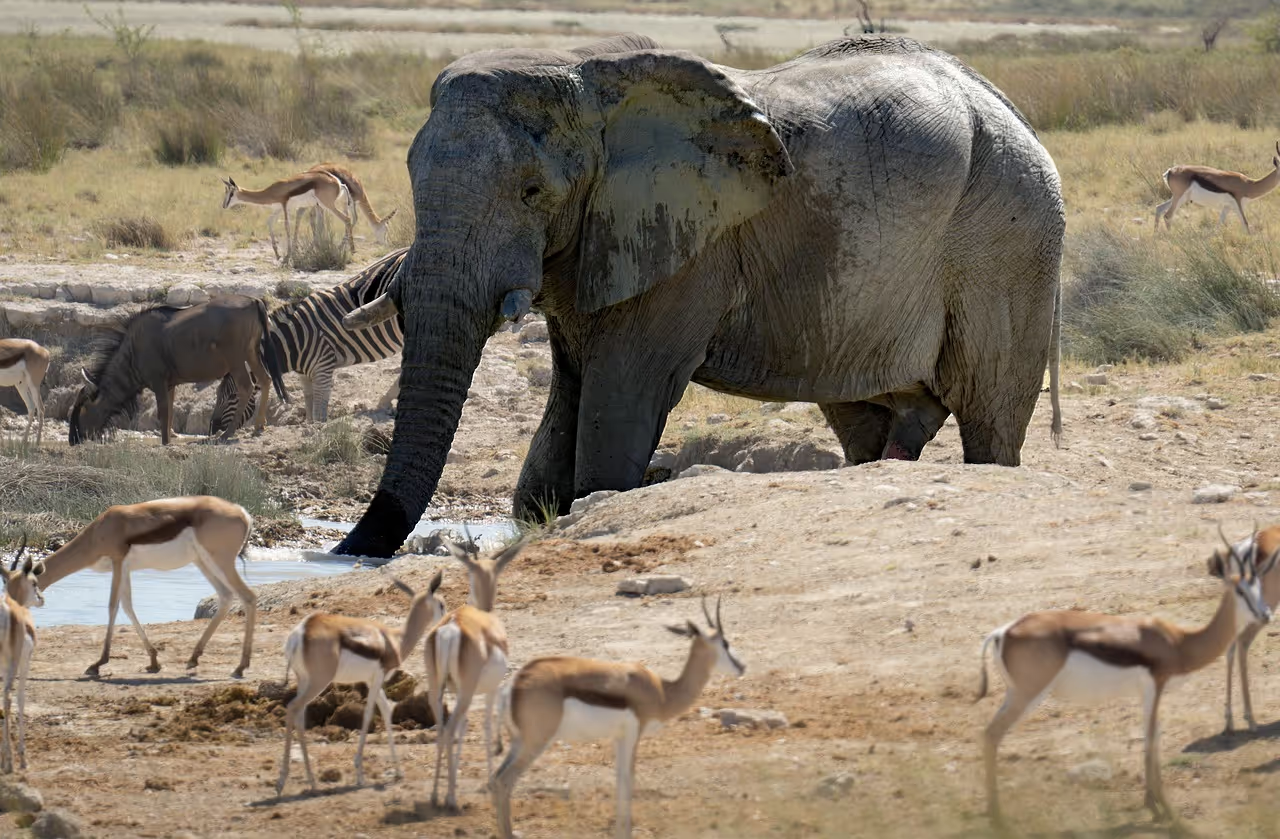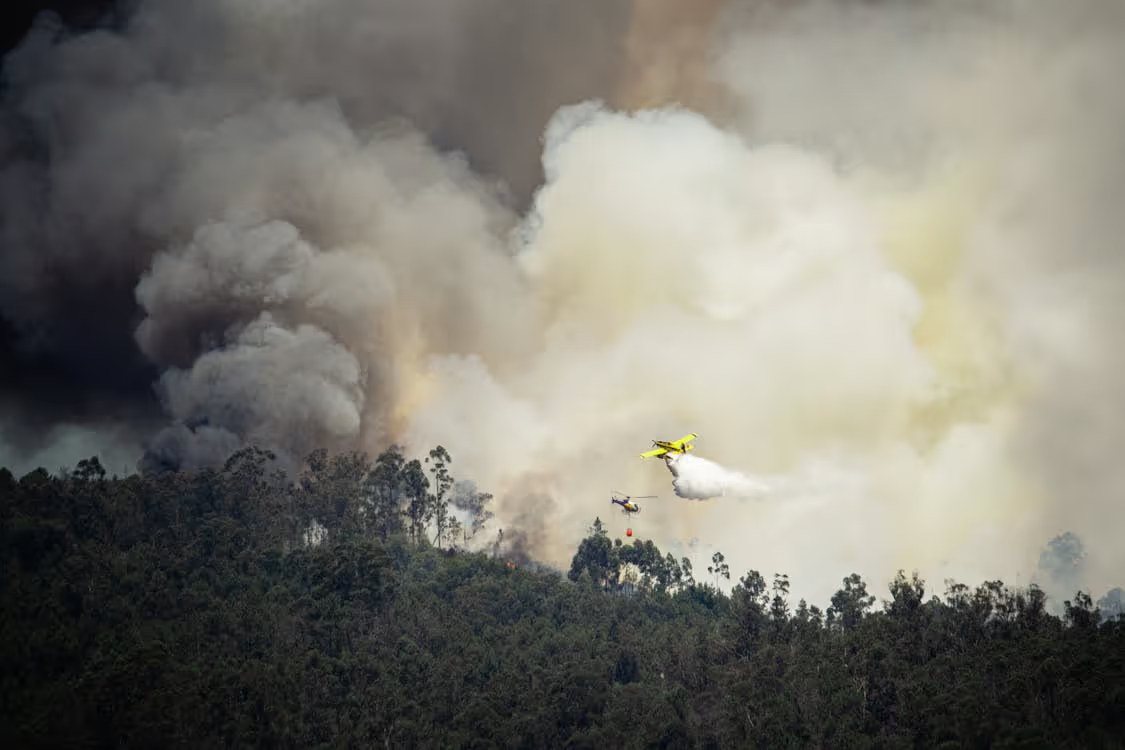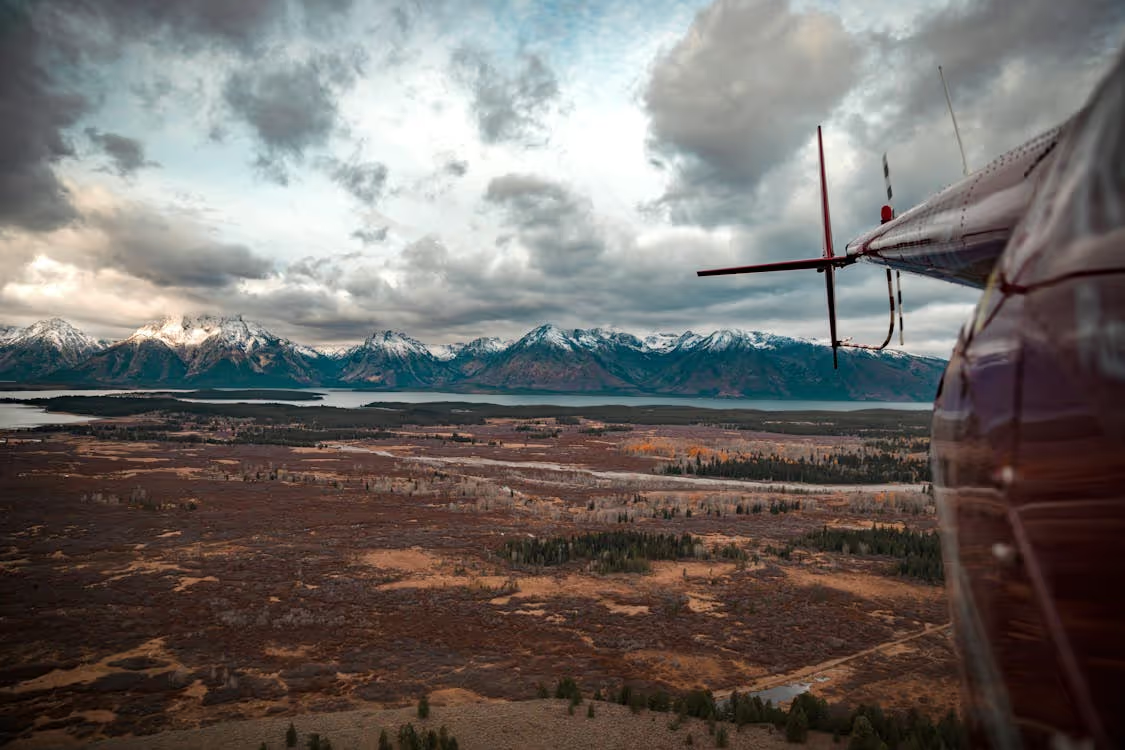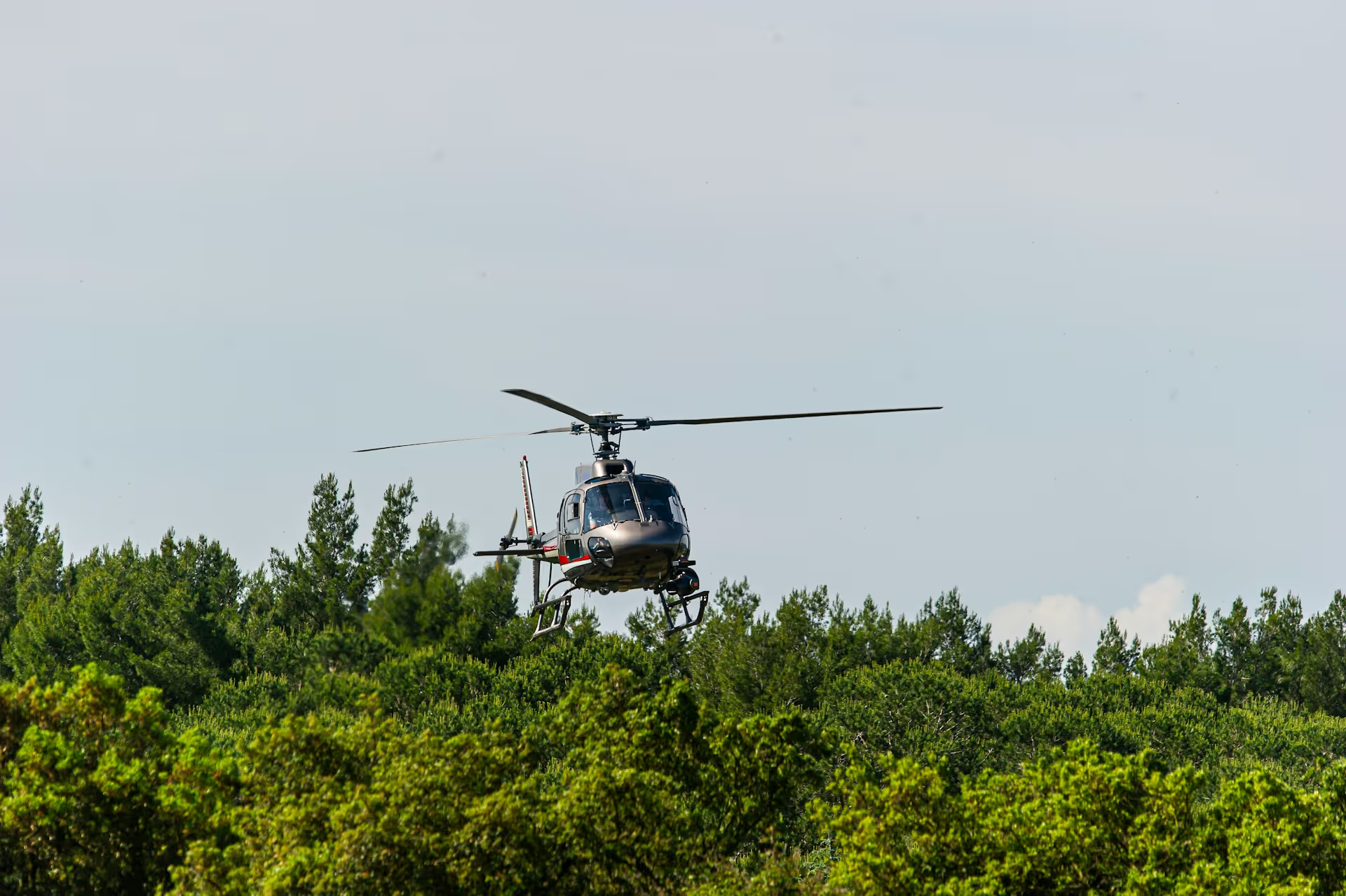National parks offer some of the most breathtaking yet fragile landscapes on Earth, and managing these vast, often remote areas is no simple task. Park agencies need reliable tools and strategies for protecting visitors, ecosystems, and wildlife, whether safeguarding endangered species or responding to wildfires.
Helicopters have become an indispensable part of this effort, providing speed, versatility, and access where roads and trails fall short. Let’s explore the many roles helicopters play in national park management, the advantages they provide, and how responsible aviation practices help balance access to these breathtaking landscapes with preservation.
Key Roles of Helicopters in National Park Management
Helicopters play a critical role in many different facets of national park management. Aircraft including helicopters log an estimated 12,000–13,000 hours each year in support of National Park Service programs and missions.
From wildlife conservation and maintenance support to search and rescue and law enforcement operations, these versatile aircraft are essential for protecting our parks. Here are a few ways they’re making an impact:
Resource and Wildlife Management
Helicopters support wildlife biologists, zoologists, park rangers, and other national park employees as they work to protect vital ecosystems and monitor wildlife populations in national parks. In fact, about 40% of the National Park Service’s helicopter missions are dedicated to resource and wildlife management.
Land and Wildlife Surveys
Helicopter charter companies are routinely called upon to perform aerial survey operations in preserves and national parks, like in Grand Teton National Park, which Helicopter Express has served for years.
That’s because helicopters provide aerial views that enable biologists to conduct broad-scale land and wildlife surveys both safely and efficiently. This visual data, alongside prediction models for developing estimates of total populations, help researchers monitor changes in populations and habitats so they can determine whether their conservation efforts are effective.
Wildlife Collaring and Tracking
Helicopters enable safe and efficient collaring and tracking, a humane procedure in which scientists catch and fit animals with tracking collars or chips before releasing them back into the wild. This process allows researchers to track seasonal movements of animals, monitor populations, and even shift hunting seasons to reduce its impact on certain populations.
Rescue, Relocation, and Medical Care
Park rangers and researchers often rely upon helicopter charter companies to assist in the capture and extraction of injured or at-risk animals so they can receive life-saving medical care with minimal stress. This rapid response capability is necessary for preserving biodiversity and preventing the loss of vulnerable species in fragile ecosystems.
Anti-Poaching Support
Helicopters can also provide surveillance and enforcement of anti-poaching laws in areas vulnerable to illegal hunting. Their ability to cover vast areas quickly allows rangers to monitor remote or rugged terrain where poachers often operate.
Equipped with thermal imaging, GPS tracking, and real-time communication systems, helicopters enable rapid detection of suspicious activity and swift deployment of enforcement teams. This aerial advantage not only deters poaching attempts but also improves the chances of intercepting offenders before harm is done.
Ecological Assessments
Finally, helicopters can be equipped with advanced tools and technology that enable scientists to study vegetation health, water systems, and other environmental factors across vast, remote, or largely inaccessible areas that would be difficult (or impossible) to reach via other methods. These insights are essential for managing natural resources, predicting ecological shifts, and developing strategies to combat environmental degradation.

National Park Maintenance
Maintaining the infrastructure and natural beauty of national parks often requires park teams to reach remote areas via helicopter.
Transportation of Personnel, Equipment, and Supplies
Helicopters are capable of safely lifting and carrying thousands of pounds of building materials, tools, and crews to construction sites deep within the backcountry. Heavy-lift aircraft are often used to deliver components for building bridges, observation decks, ranger stations, new trails, and more.
Waste Removal
Helicopters are an efficient and low-impact means of extracting trash, debris, and other waste from protected areas without disturbing the surrounding environment.
Wildland Firefighting
Unfortunately, the protected lands of America’s national parks are not immune to the devastation of wildfires. In fact, many parks have suffered recent wildfires, including Gunnison National Park, Olympic National Park, and Yellowstone National Park.
But helicopter crews who understand the severity and unpredictable nature of wildfires can provide the specialized firefighting helicopters, extensively trained crews, and advanced aerial firefighting techniques needed to prevent and manage wildfires that threaten public lands.
Aerial Firefighting
Equipped with Bambi Buckets and tanks, helicopters can target hotspots and slow the spread of fires in national parks and other protected areas. Their ability to hover and maneuver in rugged terrain makes them particularly effective in areas that ground crews cannot easily reach, providing a critical first line of defense against wildfire escalation.
Prescribed Burns
Aerial ignition tools can be used to help start prescribed fires, or controlled burns, that support national park management objectives. These burns reduce the buildup of flammable vegetation, restore natural ecosystems, and lower the risk of catastrophic wildfires in the future.
Logistical Fire Support
Helicopter teams can deliver supplies, food, and water to ground crews or transport firefighters directly to strategic locations. This capability ensures rapid deployment and sustained operations in remote or largely inaccessible fire zones, enhancing the safety and efficiency of firefighting operations.

Search and Rescue
The National Park Service responds to about 4,500 search and rescue incidents every single year. Helicopters can dramatically improve the speed and success of search and rescue operations in rugged or remote national park terrain, as they can bypass obstacles like rivers and cliffs that would otherwise delay critical treatment.
Aerial Reconnaissance
Helicopters can cover vast areas far quicker than ground-based transportation methods, enabling search and rescue crews to spot missing or injured park visitors when visibility is limited and time is of the essence. Helicopters are capable of flying for several hours and for hundreds of miles at a time without needing to refuel, and their ability to hover means they can perform close-up inspections of both land and water.
Personnel Deployment
Crews can be inserted directly into dangerous, hard-to-reach locations using hoists or precision landings, ensuring first responders can reach victims without delay.
Medical Evacuation
Individuals with life-threatening injuries or illnesses can be quickly airlifted and transported to hospitals for medical care via emergency rescue helicopters. These aircraft can be equipped with medical equipment and technology – like ventilators, cardiac monitors, defibrillators, and portable ultrasound devices – so that onboard doctors and nurses can begin in-flight medical care, stabilizing patients before they even reach a hospital. In-flight medical care significantly enhances patient outcomes, especially when dealing with trauma cases, cardiac emergencies, and other life-threatening conditions.

Law Enforcement Operations
Helicopters also support law enforcement teams by enhancing visibility, response times, and reach in vast, difficult-to-reach areas.
Surveillance
Aerial patrols help national park law enforcement teams monitor illegal activities like poaching and trespassing (sometimes even deterring illegal activity simply through their presence).
Criminal Pursuits
Helicopters are sometimes hired to assist in the tracking and detainment of suspects across difficult terrain. Their ability to follow suspects from the air prevents the likelihood of escape and supports safer apprehension of criminals.
Aerial Tours
Finally, carefully planned and executed aerial tours can provide the public with access to national parks without altering or damaging their sensitive environments. Helicopter tours provide a unique, low-impact way for visitors to experience areas that may be too dangerous or remote to visit on foot, providing clear views of geological features, wildlife habitats, and historical landmarks.
However, helicopter tour operators must follow strict FAA and National Park Service regulations that limit routes, altitudes, and frequency in order to preserve natural soundscapes and limit disruption to park personnel, visitors, and wildlife.
Advantages of Helicopter Support in National Parks
Hiring helicopters to assist in the management of national parks allows agencies to respond quickly, access remote areas, and carry out essential tasks safely and efficiently. Here are five advantages of hiring helicopter charter services for national park management:
- Rapid Response: Helicopters can be ready to deploy within minutes, and their quick speed and agility mean they can reach emergencies, wildfires, and isolated incidents far quicker than vehicles on the ground or first responders on foot.
- Increased Accessibility: In rugged or remote areas where no roads or trails exist, helicopters provide the ability to fly overhead, avoiding obstacles and providing a direct line of transportation.
- Enhanced Efficiency: Tasks like aerial surveys, equipment delivery, and search and rescue missions can be completed in a fraction of the time with helicopters.
- Key Logistical Support: Due to their heavy-lift capabilities and maneuverability, helicopters are capable of delivering equipment, tools, supplies, and personnel where it’s needed most.
- Reduced Physical Risk: Helicopters make it possible for park rangers, researchers, scientists, and other personnel to avoid dangerous terrain on foot.

Environmental and Community Impacts of Helicopters in National Parks
Helicopters provide undeniable benefits for government agencies, park rangers, and scientists managing the delicate ecosystems that exist in national parks. However, the low-frequency sound of rotor blades cutting through the air can travel long distances, creating noise that impacts both wildlife and human enjoyment.
Here are a few environmental and community impacts that helicopter teams must consider:
- Wildlife Disturbances: Sudden noise or proximity to helicopters can disrupt animal behavior and migration.
- Impacted Visitor Experiences: In parks like Hawaii Volcanoes, helicopter noise can be heard in nearly all wilderness areas. This greatly impacts the natural soundscapes that visitors seek in remote wilderness.
- Community Disruption: In areas like the Himalayas, frequent helicopter flights can disturb sensitive ecosystems and interfere with local communities.
The good news? Innovative solutions such as improved rotor designs, sound dampening materials, and electric propulsion systems are helping to minimize helicopter noise. Helicopter charter teams can also minimize the effects of noise pollution through noise reduction techniques and the optimization of flight paths.
How Helicopter Services Balance Access and Preservation of National Parks
Whether rebuilding crucial trails and infrastructure after a natural disaster, rescuing a national park visitor who has succumbed to extreme heat, or helping endangered species thrive, aviation is a critical piece of national park management and wildlife conservation. But responsible helicopter operations depend on the expertise of the team, their commitment to preserving the environment, and a clear understanding of national park values.

That’s why working with experienced helicopter crews who prioritize both access and preservation is essential for long-term national park health. Here are a few ways in which helicopter companies help preserve national parks in partnership with park management:
- Maintaining Proper Distance and Altitude: Responsible helicopter service companies will always follow standard practices, including flying at altitudes over 400 meters and staying at least 2,000 meters from sensitive wildlife habitats.
- Strategically Timing Operations: Flights should be scheduled outside of breeding, nesting, and migration seasons to limit wildlife stress.
- Using Noise-Reducing Technology: Advanced, state-of-the-art fleets include modern helicopters equipped with advanced rotor and muffler systems to significantly lower noise levels.
- Continuous Ecological Monitoring: On-the-ground feedback from biologists and resource advisors helps helicopter teams adjust flight patterns or scheduling.
- Thorough Training: Pilots and crews must be trained in environmental best practices and wildlife sensitivity.
- Following Operational Guidelines: Responsible charter companies will always adhere to best practices, regularly reviewing and updating their standard operating procedures.
Helicopter Express: Trusted Helicopter Support for Critical Park Operations
At Helicopter Express, we have supported national park agencies, environmental researchers, and conservation groups with precision helicopter services for over three decades. Whether you need assistance with wildfire response, construction, wildlife management, or search and rescue operations, we have the crew and equipment to help.
Our team of elite pilots and logistics experts bring unmatched experience and professionalism to every mission, prioritizing safety, efficiency, and sustainability. We don’t just get the job done – we work to protect the people, land, and wildlife that make national parks so valuable.
If you need helicopter support for your next park project, contact us today.

